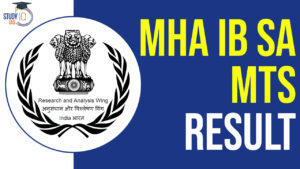Daily Current Affairs for UPSC 2023
Q) Recently seen in news, “Master Plan for Delhi 2041” is developed by:
- Prime Minister’s Office
- Ministry of Home Affairs (India)
- President’s Secretariat
- None of the above
Daily Current Affairs for UPSC – 10 March 2023
Explanation:
- Option (4) is correct: Master Plan for Delhi (MPD) 2041 is an instrument that assesses the current status of the National Capital and guides how desired development in various areas can be achieved. This is the fourth master plan developed by Delhi development Authority (DDA).

Q) With reference to the International Labour Organisation, consider the following statements:
- The organisation was created after the second world war.
- The conventions adopted by ILO are legally binding in nature.
Which of the statements given above is/are not correct?
- 1 only
- 2 only
- Both 1 and 2
- Neither 1 nor 2
Explanation:
- Statement 1 is incorrect: The International Labour Organization (ILO) is a United Nations agencywhose mandate is to advance social and economic justice through setting international labour standards. Founded in October 1919 (after the first world war) under the League of Nations, it is the first and oldest specialised agency of the UN. The ILO has 187 member states: 186 out of 193 UN member states plus the Cook Islands. It is headquartered in Geneva, Switzerland.
- Statement 2 is correct: The International Labour Conference of the International Labour Organization has adopted 189 Conventions, which are legally binding international treaties that may be ratified by member states, as well as 202 Recommendations, which are not legally binding, but set out standards to guide action by member States.
Q) Recently, the Lancet has recently published a mid-line assessment of the progress across 707 districts of India for 33 Sustainable Development Goals (SDG) indicators related to health and social determinants of health. With this reference, consider the following statements:
- The data collected on both children and adults was confined to the National Family Health Survey (NFHS) 2016.
- India is meeting the targets for over 70% of the SDG indicators.
- On most of the indicators, the Aspirational Districts seem to be doing better in achieving the SDG targets compared to the other districts.
Which of the statements given above is/are not correct?
- 1 only
- 2 only
- 1 and 3 only
- 1, 2 and 3
Explanation:
- Statement 1 is incorrect: The Lancet has recently published a mid-line assessment of the progress across 707 districts of India for 33 SDG indicators related to health and social determinants of health. Data collected on children and adults from two rounds of the National Family Health Survey (NFHS) conducted in 2016 and 2021 were used. 33 indicators that cover 9 of the 17 official SDGs were identified. The goals and targets outlined by the Global Indicator Framework, Government of India and World Health Organization (WHO) to determine SDG targets to be met by 2030 were used.
- Statements 2 and 3 are incorrect: Findings of the Study:
- India is not On-Target for 19 of the 33 SDGs indicators.
- The critical Off-Target indicators include Access to Basic Services, Wasting and Overweight Children, Anaemia, Child Marriage, Partner Violence, Tobacco Use, and Modern Contraceptive Use.
- For these indicators, more than 75% of the districts were Off-Target.
- These Off-Target districts are concentrated in the states of Madhya Pradesh, Chhattisgarh, Jharkhand, Bihar, and Odisha.
- It does not appear that Aspirational Districts, on average, are performing better in meeting the SDG targets than other districts on majority of the indicators.
Q) With reference to CRISPR-Cas9, consider the following statements:
- It can only edit parts of the genome by removing or altering the sections of the DNA sequence.
- Cas9 acts as a pair of ‘molecular scissors’ that can cut the two strands of DNA.
Which of the statements given above is/are correct?
- 1 only
- 2 only
- Both 1 and 2
- Neither 1 nor 2
Explanation:
- Statement 1 is incorrect: CRISPR-Cas9 is a unique technology that enables geneticists and medical researchers to edit parts of the genome by removing, adding, or altering sections of the DNA sequence. It is currently the simplest, most versatile, and precise method of genetic manipulation.
- Statement 2 is correct: Cas9 is an enzyme, acts as a pair of ‘molecular scissors’ that can cut the two strands of DNA at a specific location in the genome so that bits of DNA can then be added or removed.
Q) With reference to National Bamboo Mission, consider the following statements:
- It is a Central Sector Scheme under the Ministry of Environment Forests and Climate Change.
- It aims to increase the area under bamboo plantation in non-forest Government and private lands.
Which of the statements given above is/are not correct?
- 1 only
- 2 only
- Both 1 and 2
- Neither 1 nor 2
Explanation:
- Statement 1 is incorrect: National Bamboo Mission was launched during 2018-19 as a Centrally Sponsored Scheme (CSS). It is being carried out as a sub-plan of the Mission for Integrated Development of Horticulture (MIDH). NBM mainly focuses on the development of the complete value chain of Bamboo sector to link growers with consumers. The Department of Agriculture & Cooperation (DAC) under the Ministry of Agriculture & Farmers Welfare implemented the scheme, to harness the potential of the bamboo crop.
- Statement 2 is correct: Objective of National Bamboo Mission:
- To increase the area under bamboo plantation in non-forest Government and private lands to supplement farm income and contribute towards resilience to climate change.
- Connecting farmers to markets to enable farmer producers to get a ready market for the bamboo grown and to increase the supply of appropriate raw material to the domestic industry.
- It also endeavours to upgrade skills of traditional bamboo craftsmen as per the requirement of contemporary markets with a tie-up with enterprises and premier institutes.


 SSC Stenographer 2024 Notification Out a...
SSC Stenographer 2024 Notification Out a...
 IB SA MTS Final Result 2024 Out at mha.g...
IB SA MTS Final Result 2024 Out at mha.g...
 Model Skill Loan Scheme, Eligibility, Re...
Model Skill Loan Scheme, Eligibility, Re...

















